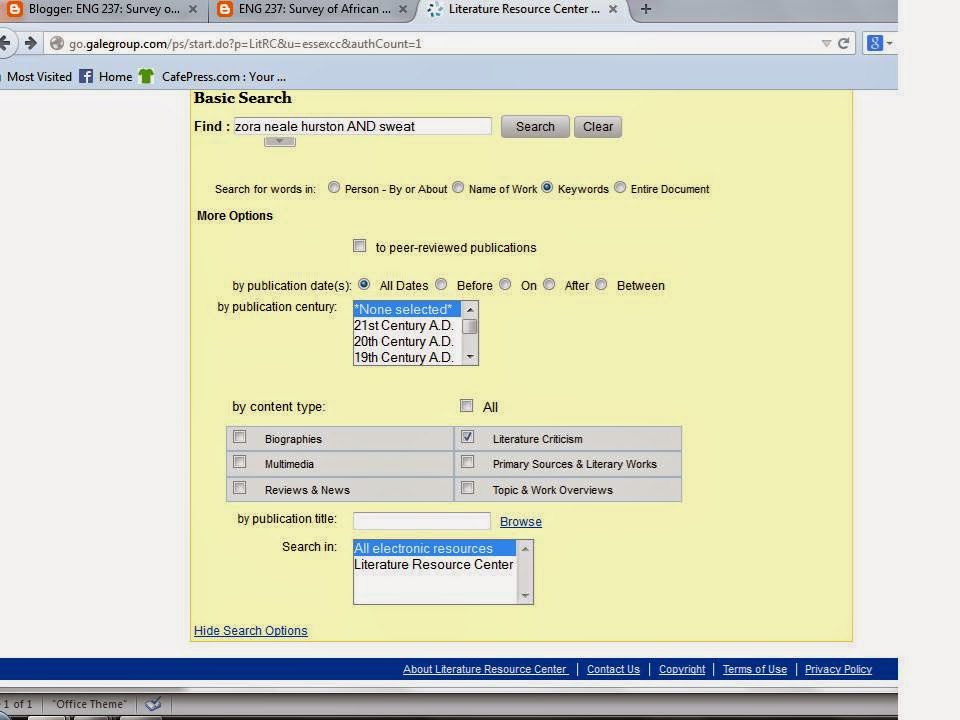At left is a photo of musical comedy legend Carol
Channing, who, in her 2002 autobiography (Just Lucky, I Guess),
acknowledged that she was racially mixed. This photograph was taken by Carl Van
Vechten, who is satirized in Passing as the character "Hugh Wentworth.
Final Project: Group Presentation (20 points)
You will be responsible for preparing and delivering a presentation focusing on an aspect of Nella Larsen’s Passing, and related to this semester’s theme: Aliens/Outcasts/Outsiders. The major theme should be considered as the central, controlling idea
of your piece—again, if you find that other themes of significance are
surfacing and converging with your major theme as you develop your
project, please note them.
You
may also interweave some of the other relevant thematic discussions
from our semester (the focus on the alien/outcast/outsider in literature
and popular culture) into this group presentation. Relate this text to other texts discussed in class, if you find them relevant.
Sample
themes: aesthetics (beauty), alienation, childhood, class distinctions,
colorism/color consciousness, community, corporeality, difference,
equality, ethics/morality, family, femininity, hypocrisy, identity,
individuality, innocence, intellectualism, interracialism, literacy,
loneliness, masculinity, monstrousness, morality, poverty, race
relations, racism, rebellion, religion, responsibility, segregation,
separatism, sexism, sexual exploitation, sexuality, violence. Some of
these themes overlap—your thesis should reflect your theme in a clear,
well-articulated manner.
You
are encouraged to use video, film, photographs, text (including quotes
from the text), and other documents to create a PowerPoint presentation
of your work (maximum 12 minutes in length).
You
must include a slide listing the “Credits,” i.e., the specific
contribution made by each group member. In addition, you must create a
Works Cited Page as the final slide of your presentation, using
MLA-style. Refer to the MLA Style Guide on the course blog for MLA-style
compliance. At our final class meeting, the group members will present
their projects. I encourage you to be as imaginative as possible with
these presentations.
Below is a list of the criteria for your PowerPoint, adapted from a rubric adapted from a former colleague.
Final Project Rubric for PowerPoint Presentation Photo-documentaries and Essay
The
following categories on the reverse side of this sheet provide a clear
list of the elements that are expected in each group’s project,
regardless of its form and purpose. Use these criteria as a tool that
will enable you, as the designer, to produce persuasive communication by
means of innovation, creativity, and polished reflection. Each of the categories is worth 4 points, for a total of 20 points of the final grade.
GROUP NAME_____________________________________
Thesis
and Purpose:
Points___
How clear is your thesis? Is the topic compelling and relevant not only to your own interests but to an issue of larger significance? How well do the images (photos, film, or other visuals) illustrate both the thesis and its related ideas in a cogent manner?
Caption Information and Presentation: Points___
Is there a clear integration of the visual and written composition of the final project? How well have you complemented your images with written text? How does the written text (approximately 350 – 500 words total) act to amplify and enhance the quality of the project as a whole? Are original insights supported by relevant research in your written text or is it merely expository?
Individual Contribution: Points___
How well are your slides integrated into your oral delivery? Did you proofread your slides to ensure they are grammatically correct and are MLA-compliant? Have you included quotes from the primary text as well as any other texts? Are they MLA-compliant? Have you rehearsed your delivery (individually as well as with the group) to ensure a smooth presentation?
How clear is your thesis? Is the topic compelling and relevant not only to your own interests but to an issue of larger significance? How well do the images (photos, film, or other visuals) illustrate both the thesis and its related ideas in a cogent manner?
Composition:
Points___ Does
the project follow a logical flow of thought? Do these ideas transition well and
are they well-supported by both visual and interpretive qualities? Is the
project free of grammatical errors? Can it be used as a model for other
students in the future?
Technical Image and Quality/Audio Recording and Editing: Points___
How
well do the images fit into the overall presentation? Are the images
high-quality digital files? Do the photographs demonstrate a variety of
images and perspectives? Do they seem to illustrate or create a pattern of
thought? How does the overall final
project look, including captions, titles, transitions, and
image?Technical Image and Quality/Audio Recording and Editing: Points___
Caption Information and Presentation: Points___
Is there a clear integration of the visual and written composition of the final project? How well have you complemented your images with written text? How does the written text (approximately 350 – 500 words total) act to amplify and enhance the quality of the project as a whole? Are original insights supported by relevant research in your written text or is it merely expository?
Individual Contribution: Points___
How well are your slides integrated into your oral delivery? Did you proofread your slides to ensure they are grammatically correct and are MLA-compliant? Have you included quotes from the primary text as well as any other texts? Are they MLA-compliant? Have you rehearsed your delivery (individually as well as with the group) to ensure a smooth presentation?
TOTAL___________
Group 1 Group 2 Group 3 Group 4Guichelle Joy Erick Jeremiah
Anna Malik Facundo Derrick
Cesar Mariana Bryan Demetrius
Nicole Terry Falonne Caiu
Pablo






.jpg)

